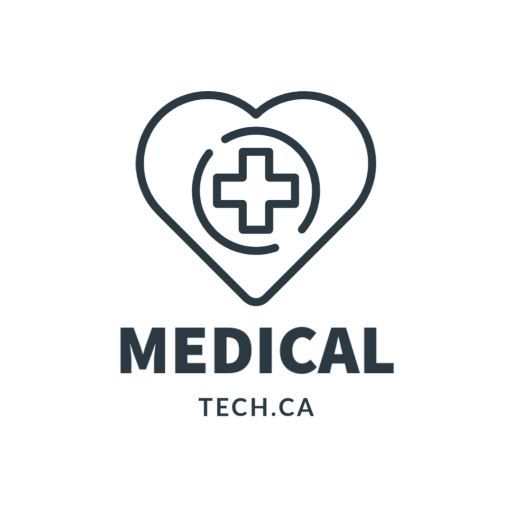by medicaltechont | Mar 31, 2010 | Uncategorized
The Liberal government has quietly scrapped a mandatory review of a new health bureaucracy.
Premier Dalton McGuinty says the legislative review, which was to have taken place by the end of March, was dropped because Ontario’s 14 Local Health Integration Networks (or LHINs) are not yet fully operational. The LHINs took effect on April 1, 2007.
“As it turns out, all of the responsibilities that we wanted the LHINs to take on, they have yet to take on,” he told the legislature.
“In particular, a big part of their new responsibilities would be long-term care (and they) have not yet done that.”
Progressive Conservative leader Tim Hudak said the review was much needed in light of a recent spending scandal at eHealth Ontario. Millions in untendered contracts were handed out at that agency, which was criticized as the worst-managed agency Auditor General Jim McCarter had ever seen.
Hudak contends health bureaucrats at various LHINs have handed out at least $7 million in untendered contracts. “I suspect Dalton McGuinty’s motivation is clear,” he said. “He does not want to have any more scrutiny of the growing rot at his LHINs, which resembles very much the kind of scandalous spending we saw at eHealth.”
The province designed LHINs to enable better local health planning and more local freedom in distributing health dollars to the neediest recipients. Ottawa is part of the Champlain LHIN, which co-ordinates and funds hospitals, community care access centres, addictions and mental health agencies, community support services, community health centres and long-term care homes across eastern Ontario. It is headed by Dr. Robert Cushman.
Read More
by medicaltechont | Mar 25, 2010 | Healthcare, Ontario MD, Technology
By Anne-Marie Tobin (CP) – Mar 24, 2010
TORONTO — As Donna Hammill-Chalk undergoes treatment for breast cancer, she can log onto the website at Sunnybrook Health Sciences Centre in Toronto, type in a username and secure password, and gain access to her medical records.
In Prince Edward Island, her mother, who was diagnosed with breast cancer in December, doesn’t have electronic records – but if they existed, it would be easier for her to share updates on her condition and treatment with her four grown children living in different parts of the world.
“Cancer – you lose all control and you can get some control back by having access to your information,” Hammill-Chalk said in an interview Wednesday from her home in Markham, Ont., where she is recovering from a mastectomy.
“I think in this day and age, patients need to take ownership and accountability for managing their own care. And you can’t do that if you don’t have the information.”
She tells her story in a report card on cancer, released by the Cancer Advocacy Coalition of Canada. The report also calls for more funding for cancer drugs, bans everywhere on smoking in cars with kids and more genetic testing so treatments can be targeted to those who will benefit.
Dr. Pierre Major, chair of the report card committee, said the electronic records system at Sunnybrook, known at MyChart, is the only one he’s aware of that’s available to cancer patients in Canada.
Physicians there have told him they’re happy with it, he said.
“It’s great because patients look up in their chart what the results are, and it saves phone calls. The patients are happy because they can access their results or even change their appointments.”
It’s something that Marlene Nicholson, who lives in Bedford, N.S., can only wish for as she helps her mother navigate the health-care system. She’s Hammill-Chalk’s sister, and has made the three-hour drive to Lower Freetown, P.E.I., on numerous occasions in recent months to support their 69-year-old mom, Margaret Hammill, during her medical appointments.
With one sister in Ontario, another in Bahrain, and a brother in California, she has to relay a lot of information, Nicholson said.
“When the siblings are at a distance, yes, it would be great to be able to just say ‘OK, go here’ or ‘Mom has a password’ or whatever it takes, or if we could send a file … everybody can have access to it.”
Read More
by medicaltechont | Mar 15, 2010 | Healthcare
The folks at Medsphere, which licenses hospital software based on the VA’s open source VistA system, has launched aStimulus ROI Calculator, a handy way for evaluating its software based on that sweet, sweet stimulus cash, and of getting your hospital on its radar.
It’s a good thing.
But if you’re looking at health IT, especially if you’re a clinic, a stimulus calculator is not the first place you should be looking.
During the HIMSS show I got this clue in the Kryptiq booth, from Thomas Landholt (right), who runs a family clinic in Missouri and has been through the automation wars.
His advice? First write a business plan.
Whether you can afford an Electronic Medical Record (EMR) system is one thing. But if government money is going to be your sole motivator, your automation effort is going to fail.
Instead, he suggested, treat your EMR investment just as you would an investment in a new imaging system, or lab system, or any other major purchase you are making for your business. That’s what your clinic is, a business.
Doctors resist thinking of themselves as businessmen, but unless you’re drawing a paycheck that’s what you are. And the biggest mistake many doctors make is spending all their time working in their business, rather than on their business.
Writing a business plan is working on your business. Figure out how you’re going to profit from this investment. Add up all the costs, list all the benefits. Put numbers on them. Do research to make certain the numbers are accurate.
What Landholt found, in building out his own EMR system, was that it helped him re-engineer his business. He put his nursing station in sight of the reception desk. He put in secure messaging to reduce the cost of connecting with patients, and increase communication. He changed workflows.
These are some of the things EMR software is designed to enable, under the stimulus. But what the software really does is provide you the opportunity to get inside your business and make it work better, more efficiently. You can lower costs and provide better care once you have access to your own data.
Read More
by medicaltechont | Mar 12, 2010 | Apple, Hardware, Microsoft, Technology
By Larry Dignan
The questions of the day are really quite simple: Should you preorder a device you’ve never touched, played with or used in any fashion? And will gadget lust trump logic?
That’s what everyone is wondering. It’s the curse of the early adopter. The logic goes like this:
- I have to preorder the iPad or I may not get one.
- OK, so I’ve never tried it but man it looks good.
- But I want to be the coolest geek on the block.
- And it’s revolutionary.
- No wait, do I really want to plunk down $499.
- Oh why not I’ll order two.
Read More
by medicaltechont | Mar 12, 2010 | Healthcare, Technology
The unprecedented level of detail in EMR clinical data opens new possibilities for defining clinical quality measures in more clinically meaningful ways. However, more detailed data can cause difficulties in ensuring that data across institutions are comparable, according to an article in the online March edition of the Journal of Medical Informatics Association.
Michael G. Kahn, MD, department of pediatrics at the University of Colorado in Denver and Daksha Ranade from the department of clinical informatics at The Children’s Hospital in Aurora, Colo., sought to examine the impact of billing and clinical data extracted from an EMR system on the calculation of an adverse drug event (ADE) quality measure approved for use in The Joint Commission’s ORYX program, a mandatory national hospital quality reporting system.
http://www.healthimaging.com/index.php?option=com_articles&view=article&id=21163:jamia-more-detailed-emr-data-may-make-comparisons-difficult-XX
The Child Health Corporation of America‘s (CHCA) “Use of Rescue Agents—ADE Trigger” quality measure uses medication billing data from 48 nonprofit free-standing children’s hospitals in the U.S. contained in the Pediatric Health Information Systems (PHIS) data warehouse and was used to create The Joint Commission-approved quality measure, according to the authors.
“Using a similar query, we calculated the quality measure using PHIS plus four data sources extracted from our EMR system:…Four versions of the ‘Use of Rescue Agent – ADE Trigger’ quality measure’s numerator and denominator events were developed as SQL-based queries against the EPIC EMR system:
Read More

